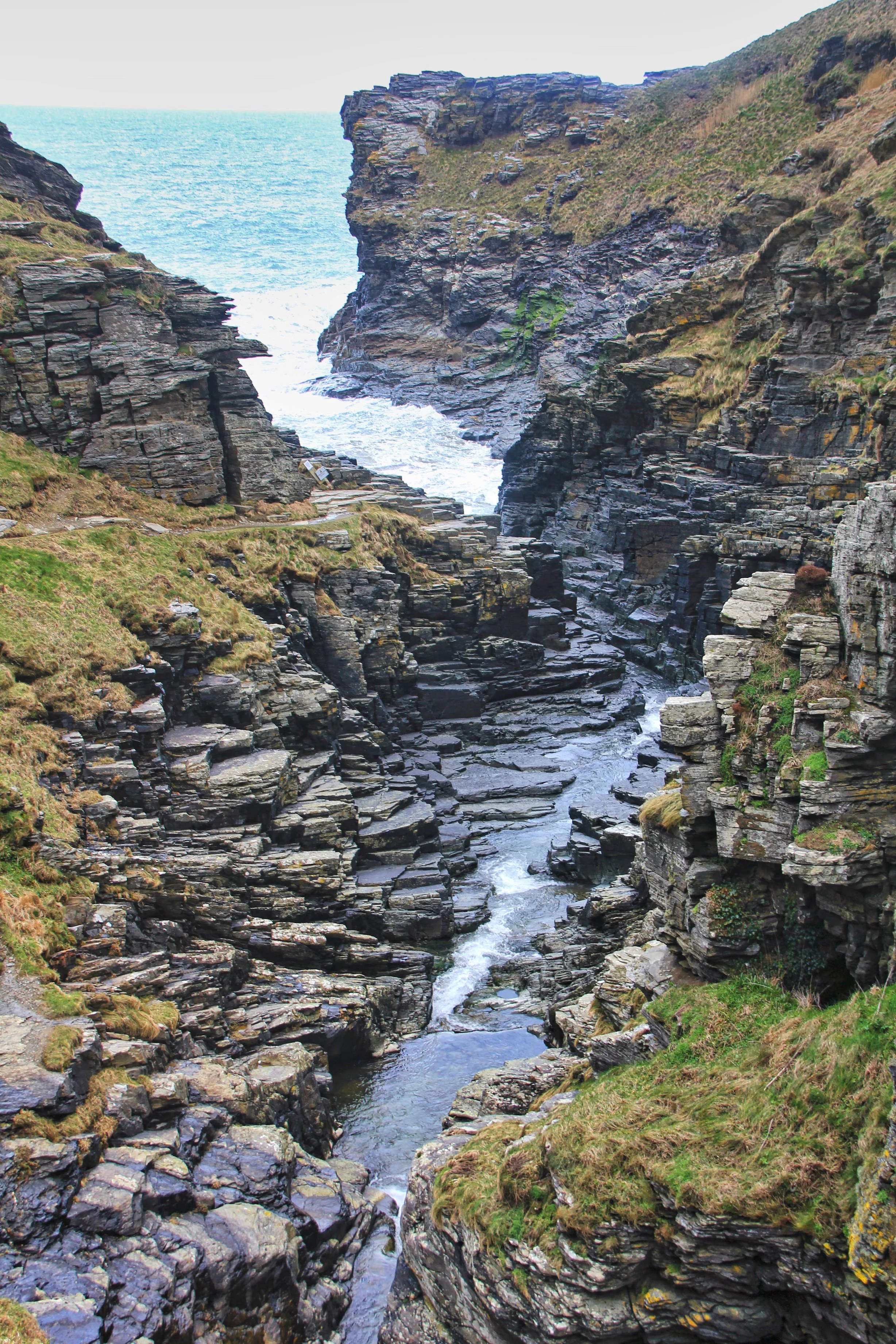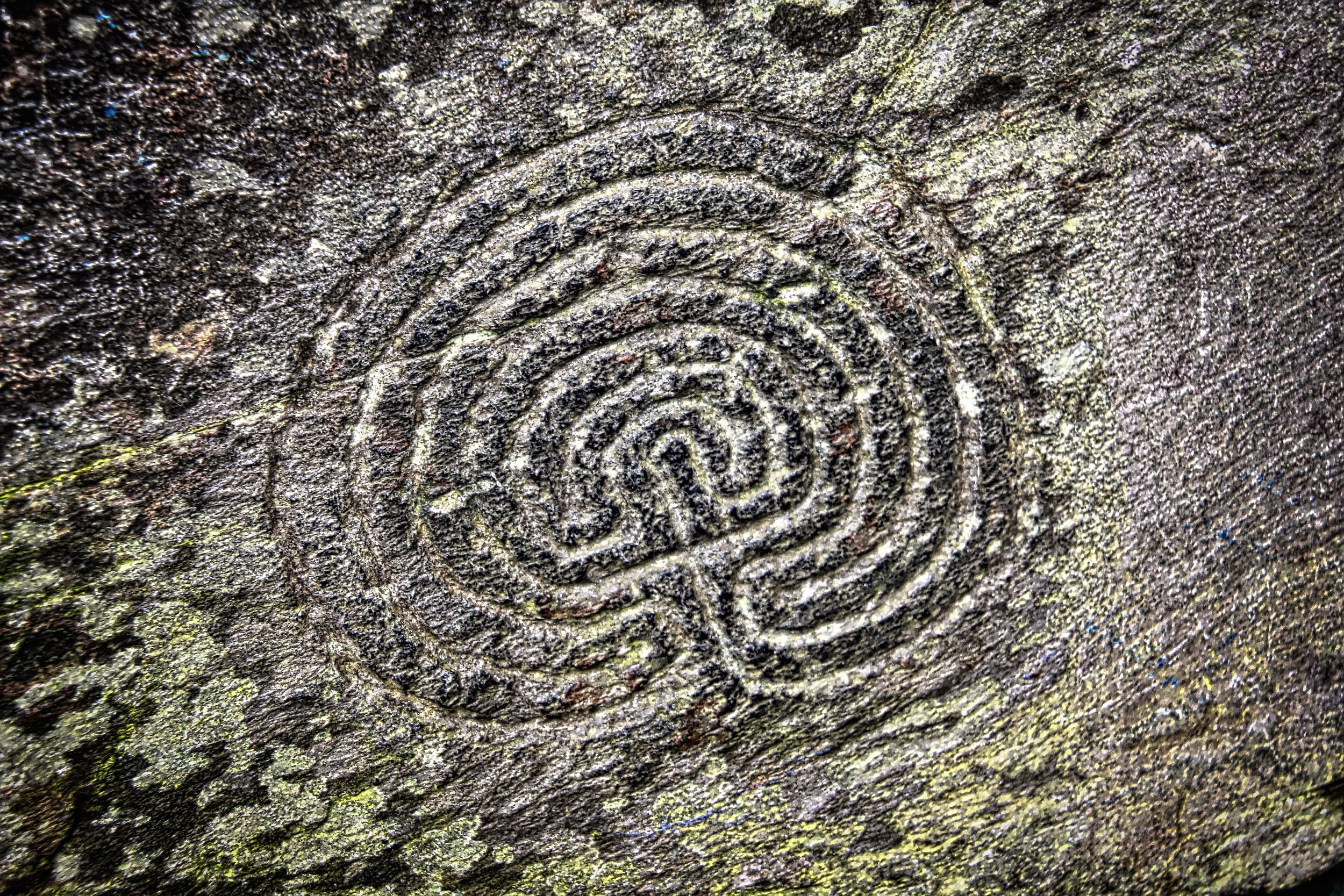Secret Places 3 - Valley of Rock and Legend
Every now and again you get an urge to visit a place that just won’t go away. It doesn’t matter that it’s miles from home, or even that, when you look at a map, there’s no obvious walk which will turn a visit into a real morning or afternoon out. The itch cannot be remedied until you scratch it by turning up and ticking the place off with a bit of an exploration.
Such was the case with me when it came to one of the most geographically iconic places in the whole of the South West. I was aware that the gorge, somewhere on the north Cornish coast, was an enigma - fabulously dramatic and at the same time a bit sepulchral. Indeed, I knew it to be a dramatic ravine of such surprising spectacle, I had always wondered why it wasn’t on the itinerary of every coach tour and completely surrounded by gift shops and tat.
Ten minutes into my visit, I began to understand why the singular place had remained aloof and alone. It is rarely visited, save for the occasional long distance walker who takes a detour from the South West Coast Path to wander up into its mighty maw. Unless you walk miles along the coast path to find the place where the ravine enters the sea, there is only one way in - and that is down a rather steep craggy footpath which, really, should only be tackled by a fairly fit person.
Once you’re down in the gorge, it is indeed dramatic - breathtaking even. It has the wildness of some remote Scottish glen. Its rocky, vertiginous, acres can’t have change much in 10,000 years.
But because of the steepness of the contours, there is no way even the most determined tourism developer could ever have put viewpoints or coach parks in, let alone cafes or gift shops.
That is why the location you will see in today’s photographs remains so special to me and those who know it. It’s not really a secret place - a lot of people know of it - but, as I’ve said, few folk actually visit this place. And, as this is the theme of this occasional series, it’s the reason I will not be giving its exact whereabouts in this article.
As is the case with every location in this series, you can easily find the place if you have a mind to. A little bit of homework and it’s yours to explore. And the bonus here is that, unlike some of the other secret spots we are mentioning, this one is comparatively easy to reach. All you need do is travel along a fairly busy coast road heading north out of one of the most visited communities in Cornwall and, where the road dips into a wooded ravine, park the car in what is a sizeable lay-by. Now, cross the road to where you see a footpath sign, and head down the very steep slope that will introduce you to one of the Wonders of the West Country.
I did this once on my way home from West Cornwall - and, with an hour or two to spare, I turned my exploration of gorge into a longer walk by strolling along the coast path to the aforementioned tourist town for a spot of lunch. If you haven’t time for that, then I do promise you it is worth just walking down the gorge and back again.
To begin with, the public footpath wends its way ever downwards past well-groomed private gardens, so that you might be tempted to think you are in the wrong place altogether. But soon you begin to enter one of coastal Cornwall’s wildest zones as the track threads its way alongside the tumbling stream - first on its eastern bank, then crossing to the west after passing the ruins of an old mill.
Monty the lurcher in front of one of the old carvings in the hidden valley
There’s a compulsory stop here so that you can admire the rock carvings and think all manner of Neolithic thoughts. Discovered in 1948, the maze-like designs on the cliff were at first thought to be from the early Bronze Age. However, in more recent times experts have changed their minds, saying that the labyrinth designs were carved with a metal tool, which would probably make them less than a century old.
Pity. They are the right shape and in the right kind of place for the enjoyment of bit of prehistoric atmosphere. I say right shape because one of them has exactly the same layout as the enigmatic maze which you can see on the western shores of distant St Agnes in the Scillies.
Anyway, I am a romantic old blighter, so went on my Bronze Age way mulling over the idea that this gorge would have been exactly my kind of place had I been born 4000 years ago and wanted somewhere easily defendable with a good water supply, close to an oceanic-sized food source, in which to live.
After descending down through the most impressive and dramatic part of the gorge, the narrow track eventually reaches the coast path, where I turned left to stride up over the cliffs that line a beautiful cove. After that it rounds the corner of a great headland which shares a name with a neighbouring headland just a few miles up the coast. The path now continues along a cliff which has one of the most well known surnames in Britain - a cliff which looms above a place known as Gug – whatever a gug is.
Only then do we finally see one of the most famous landmarks in all of the UK, perched so dramatically on its great bold bastion of headland. Of all the castles in all the world, it is difficult to imagine one more laden with more myth and fancy than the romantic, sea-borne, fortifications of that particular pile.
The legend goes something like this… The mother of an historic king was said to have been the most beautiful woman in Britain – a fact which brought her to the attentions of a particular aggressive and violent warlord. He invaded Cornwall so he could have his wicked way with her, despite the fact that she was married to the bloke who ruled Cornwall.
For protection, she was duly was hidden away somewhere near our secret location, while her husband’s Cornish forces were besieged at a hill-fort near by. However, the violent interloper was so smitten with lust, he couldn’t be bothered to mess about fighting and asked his wizard sidekick if he could come up with a magical shortcut. The necromancer brought him a drug that would change him into a living, breathing, copy of the woman’s husband - and, effectively disguised, the wicked one managed to gain entry to the queen’s bed, where he “satisfied his desire”.
And through those dubious means, one of Britain’s best loved heroes was conceived. But you only have to think about this story for a minute today to realise it’s all so wrong on so many levels. That’s when you realise one of our most famous and celebrated legends is actually based on a kind of date-rape drug incident.
English Heritage rules the particular roost nowadays and you must pay an entry fee if you want to explore the very place where the historic figure is said to have begun his life.
Our secret place, on the other hand, is absolutely free to enter and enjoy. And in some ways, I’d say it’s more dramatic and certainly more sepulchral in a wonderful silent kid of way and filled with hidden meaning. One of the Wonders of the West Country, indeed.










